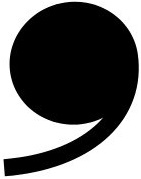How it works
-
Critics' scores
Our partner critics’ scores, combined, are a reliable measure for quality of each wine in each vintage. We analyse ratings from seven of the most respected wine critics in the world – Jancis Robinson, Antonio Galloni and Neal Martin (Vinous), Bettane+Desseauve, Jasper Morris for Burgundy, Jeannie Cho Lee and Ella Lister (Le Figaro).
We take the critics’ minimum and maximum wine ratings and spread these back out over our entire scale. As each wine critic scores differently (not just on a different scale), we also account for the frequency of ratings and normalise scores for fair comparison across a 100-point score scale. Each critic is weighted equally.
-
Ageing potential
The longest-lived wines are widely accepted to be the finest wines, so we use ageing potential in our quality assessment, applying a modest weighting.
We take the average length of our partner wine critics' suggested drinking windows for each vintage, updating the drink-to date as they re-taste.
-
Popularity
Measuring the number of searches on the world's most visited wine site, Wine-Searcher, provides a unique insight into a wine's real consumer demand.
We look at the three-month rolling average of searches for each wine, relative to the average change in searches across all wines. This is expressed as a ranking of the 5,000+ wines covered by Wine Lister. -
Prestige
A fine wine’s prestige and clout on the international market is shown by its presence in the world’s top restaurants.
We have scoured the world's top wine lists from Michelin-starred restaurants, 50 Best Restaurants, and World of Fine Wine Best Wine List restaurants, in order to ascertain global brand presence for each wine. As well as breadth across establishments, we also take into account the depth of a wine’s presence within each list, in terms of number of vintages and bottle formats.
-
Price metrics
The market price is the ultimate measure of what people are willing to pay for each wine in each vintage.
Prices on Wine Lister are provided by our price and popularity partner, Wine-Searcher, the world's largest wines and spirits search engine, carrying over 16 million offers, from 32,500 merchants worldwide. We have together developed a proprietary algorithm that analyses the range of all reported retail and broker prices, and removes outliers from the expected pricing range, in order to calculate what we believe is a more accurate depiction of market prices. Our prices are updated weekly and are quoted exclusive of duty and sales tax (VAT), and are therefore equivalent to the in-bond price.
-
Short-term price
Relative short-term wine price performance indicates current price trends, showing which wines’ and vintages’ demand supports price rises, as well as which prices are not being sustained by the fine wine market.
We calculate the price change over the last six months, and compare this to the average of the full basket of wines on Wine Lister.
-
Long-term price
Long-term wine price performance demonstrates whether a wine’s price has been sustainable over time.
We calculate the CAGR (compound annual growth rate) for each vintage over the last three years, relative to other wines and vintages on Wine Lister.
-
Price stability
Higher price stability means more consistency, less risk, and therefore a better Wine Lister score.
We use historical prices to calculate the wine price volatility, by looking at the standard deviation of the wine price over the last 12 months, expressed as a proportion of the average price for that wine over the same period.
-
Liquidity
Liquidity is an important measure of a wine’s success in the fine wine marketplace.
Using figures collated by Wine Market Journal from sales at the world's major fine wine auction houses, we measure a wine’s trading volume by looking at the number of bottles traded in the last four quarters for its top five vintages.

Our Partners







